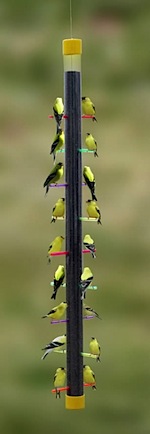-
Freebie Nyjer Feeder is Still On- Shop Small thru Dec 31st
While our previous post touted the benefits of offering nyjer (or thistle) seed, this info extends the offer through Monday night, 11/28.
For Black Friday, Small Business Saturday, Cyber Monday… wait, no shopping name for Sunday? Someone dropped the ball! Enjoy 10% off and nab a free nyjer feeder sock with every purchase.
These little feeders make fantastic stocking stuffers because birds really do use them, great quality too. You may even opt to keep the gift for your own birds!
Nyjer is an ideal seed to try if you’re just entering the backyard bird watching hobby. More of a journey as it becomes so darn addictive! Hard to explain, but once bitten by the bug… you’re hooked.
Another petite nyjer feeder, although not free, is the one-quart feeder. It has a molded acrylic dome and tray for extra perching space. In red, orange or yellow, it will prove to be a most popular spot in the smallest of spaces!
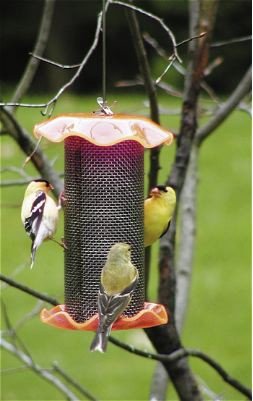
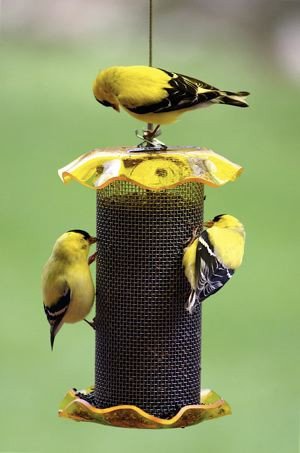
For those who enjoy the long lines, traffic and overall chaos of the holiday shopping season… hats off to you!For those who’d rather shop from the comfort of their sofa in PJ’s… (yes, please) look no further. Find the best birdhouse and bird feeder gifts when you “shop small”.
Boutique shopping rocks as many items are one-of-a-kinds and unique wares. Beyond birding, find cool yard art and unusual accents for home and garden decor with fun metal yard art too. Lots of holiday theme gifts they’ll use for seasons to come!
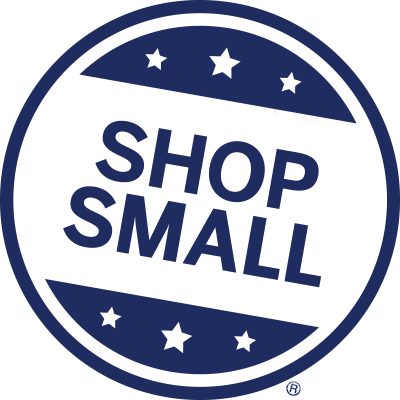
We’re part of Shop Small so Am/Ex customers earn 2x points when shopping with us through Dec. 31st.
Visit the official gift guide, or check out birding resources to see daily suggestions for all 12 days. Find something for all nature buffs on your list today and nab a free nyjer sock to boot!
Use code MC10 while this offer lasts!
-
Warmth, Wet and the Hidden Danger in Nyjer Feeders
The unseasonably warm December weather in the eastern US seems to be drawing to a close- giving way to more normal, colder temperatures. In the southeast, some thought it an appropriate time to start building the ark… as the rain just would not stop.
Take all that rain combined with extreme warm temperatures and think about your bird feeders for a moment. Yuck! Plain & simple… a four-letter word for a nasty, damp, moldy mess 🙁 With consistent rains, it doesn’t even matter if you’ve just cleaned the feeder well, or scraped the mold off suet because the nasties come right back. Oh, and the smell? If you can smell the seed, chances are about 99.99% the seed is spoiled.
Although birds have no sense of smell, they do have the smarts (for the most part) to stay away from spoiled seed. But here’s the kicker: with temperatures dropping to freezing and snow already falling in many parts… flocks of finches and pine siskins may appear at nyjer feeders overnight.
Famished, freezing and in dire need of energy (calories) to sustain themselves overnight, many of these finch-like birds may partake in whatever is being offered. If your feeder happens to be serving moldy seed, it’s a recipe for disaster among these local flocks. Even if you can’t see the green, white or gray stuff, birds ingest and pass these mold spores which are usually fatal. Generally referred to as respiratory disease or salmonella, the bacteria may have several names, but all pretty much cause a slow and painful death and or blindness resulting in starvation and predation.
Sick birds appear lethargic, allowing you to get too close for comfort. They cling to feeders (whether food is fresh or old) and
their eyes may be swollen, or even shut. Their bodies are puffed up, but it’s a different stance than when healthy birds are just trying to keep warm. Affected birds may rock, or even shake depending on the severity and stage of disease. At this point it’s the feeders themselves spreading the disease, not just the sick bird, and that’s where the tragedy lies.
Feeders must be taken down, bleached and not returned for use for at least two weeks or until the flocks disperse. The ground below feeders must also be cleaned up, even moving a hanging feeder or placing a feeding station on clean ground is a good idea. It’s an awful lot of work, and your heart starts breaking when there’s snow and birds are calling for their food. But the alternative is far worse, with one dead bird, a few dead birds, and eventually a whole bunch of fatalities around the landscape.
In our yard now it’s almost impossible to clean the ground below feeders as there are virtually puddles and mush everywhere. Since we’ve been through this ordeal once already, it looks like New Year’s Eve (day) will be spent cleaning feeders and probably moving them around the yard. First we’ll check the weather, and should the forecast call for more rain… maybe we’ll start the ark instead!
But in all seriousness, please keep bird feeders and feeding areas clean. Because we attract these birds in an unnatural setting, it is solely our responsibility to promote healthy feeding areas.
And a Happy & Healthy 2016 to you and yours!
-
Nyjer Feeders are Busy Now
They’re the last ones of the season to nest and raise their young, they’re also the only ones who molt twice per year. It really puts goldfinches in a class of their own. It’s the busy season for them, feeding the tiny black seed almost exclusively to babies. During the year, spells of non-activity may be common around nyjer feeders… but not now!
If you offer nyjer or thistle seed year-round, chances are great these birds will stick around. They won’t nest in a birdhouse, but prefer mature trees and shrubs for building their digs. Considered resident birds, in winter you’ll see dull brown-olive plumage, but their sweet song will still grace the garden on the dreariest days. A fresh water source will further entice these friendly fliers.
A fickle seed nyjer can be, it must be fresh for the birds to partake. Should the seed sit in your feeder too long, it may become moldy or rancid and they won’t touch it. One of the benefits of this long tube feeder is the ability to fill it from both ends. By alternating top and bottom refills, there’s no way for older seed to accumulate at the bottom like most feeders.
Another popular style is mesh or screen, offering an all-over feeding space as opposed to individual perches. In recycled plastic, some are durable enough to last a lifetime.
And the last benefit of thistle? It won’t germinate! You’ll never see a nasty weed below these feeders. So fill it up, keep seed fresh, offer a bathing spot and American goldfinches are bound to claim your garden as home sweet home!

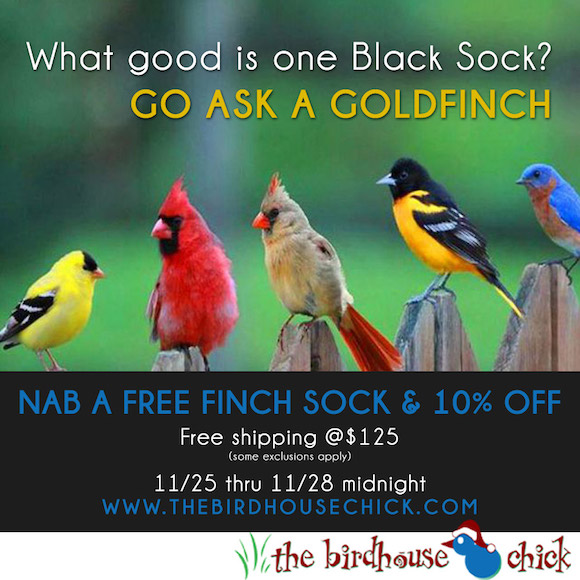

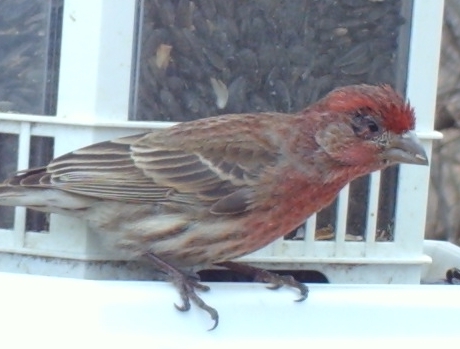 their eyes may be swollen, or even shut. Their bodies are puffed up, but it’s a different stance than when healthy birds are just trying to keep warm. Affected birds may rock, or even shake depending on the severity and stage of disease. At this point it’s the feeders themselves spreading the disease, not just the sick bird, and that’s where the tragedy lies.
their eyes may be swollen, or even shut. Their bodies are puffed up, but it’s a different stance than when healthy birds are just trying to keep warm. Affected birds may rock, or even shake depending on the severity and stage of disease. At this point it’s the feeders themselves spreading the disease, not just the sick bird, and that’s where the tragedy lies.
